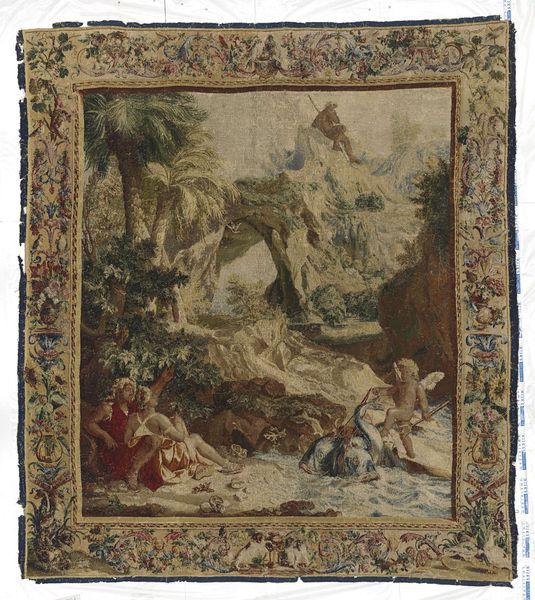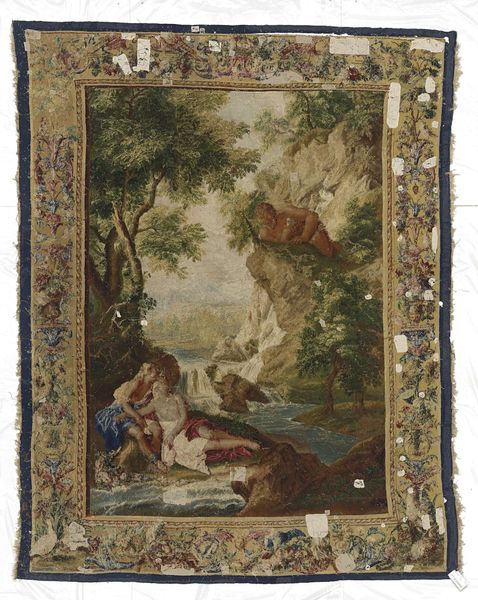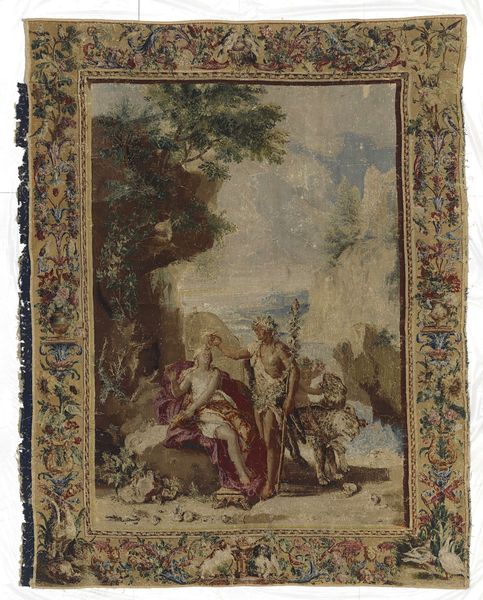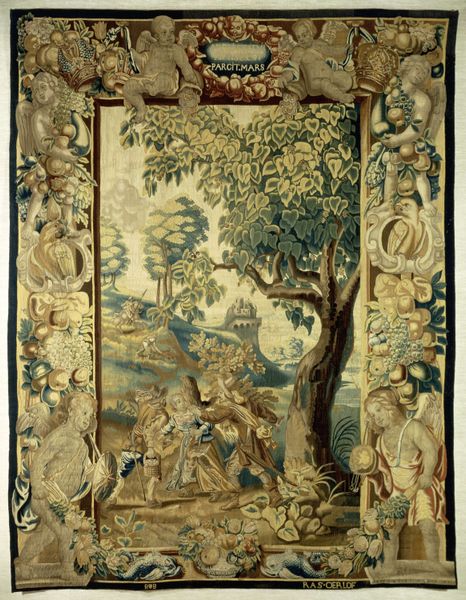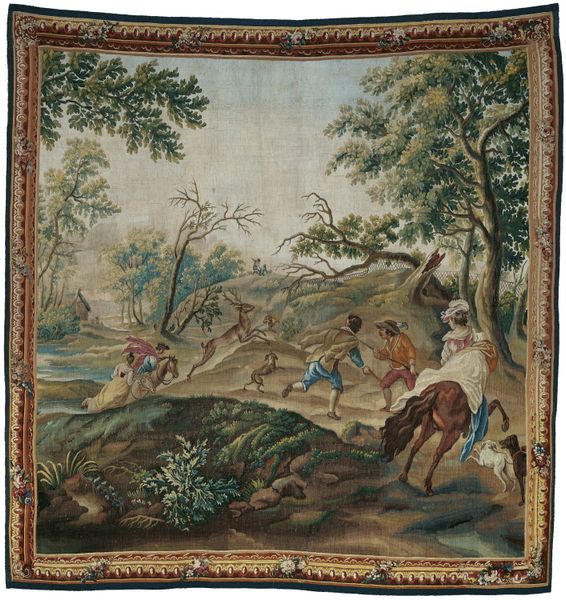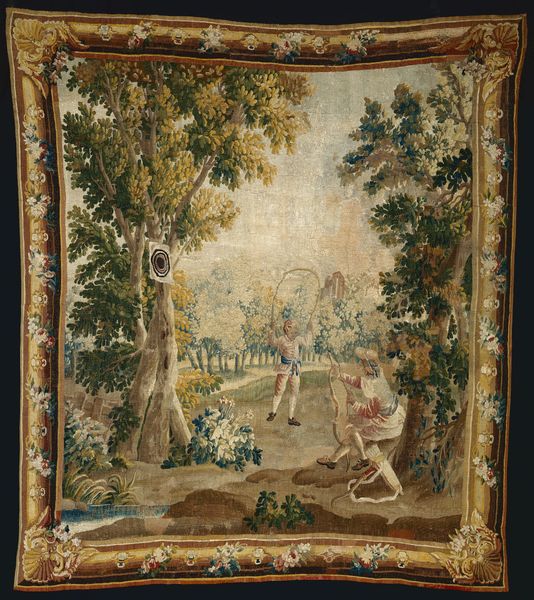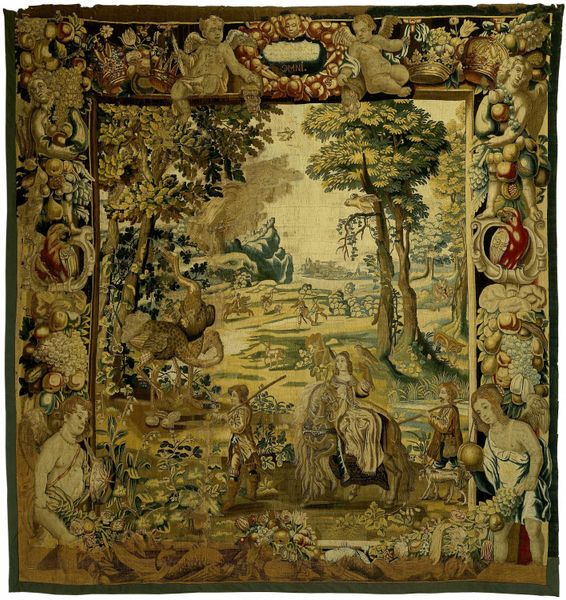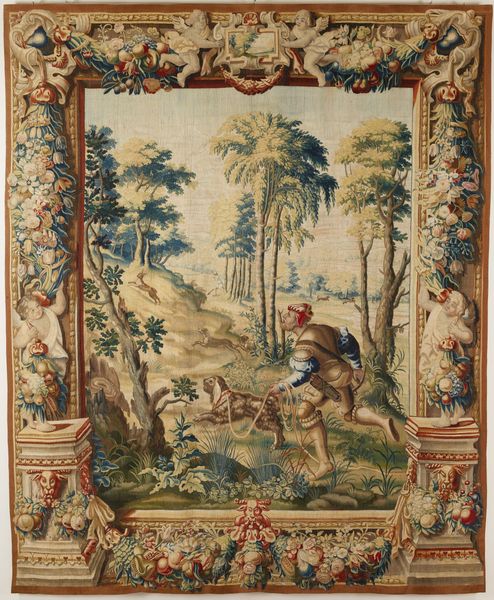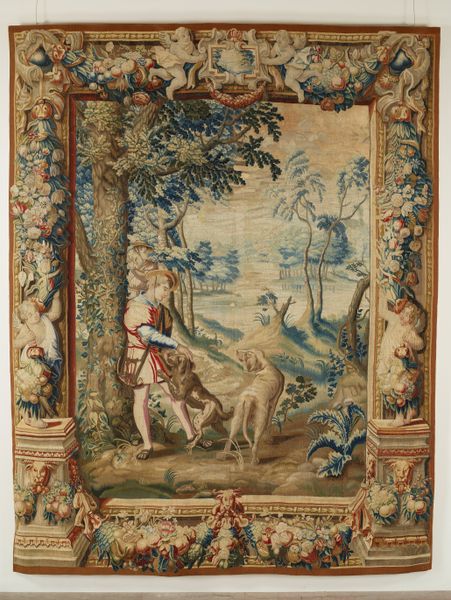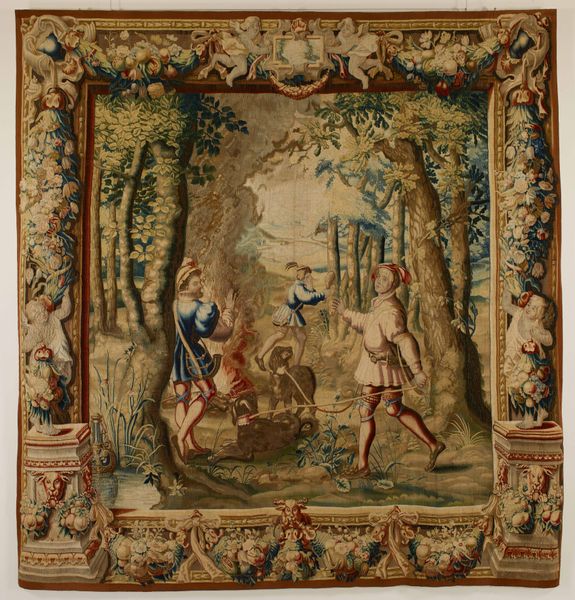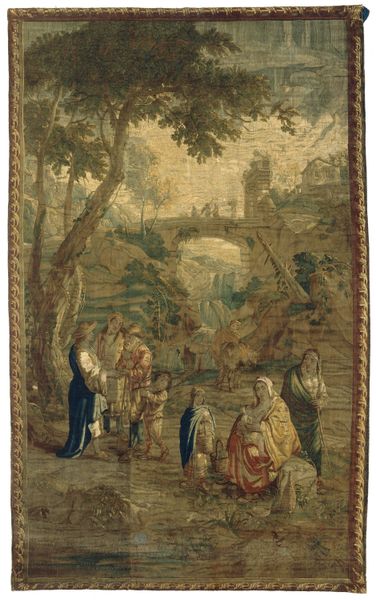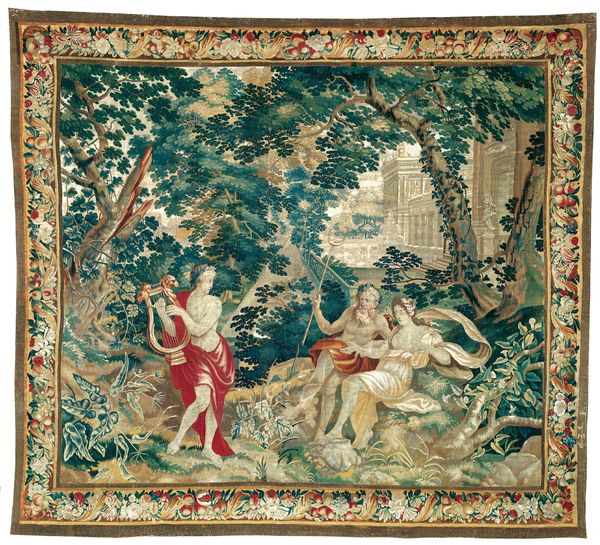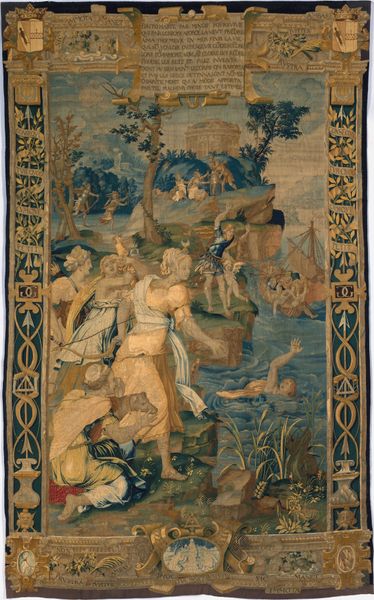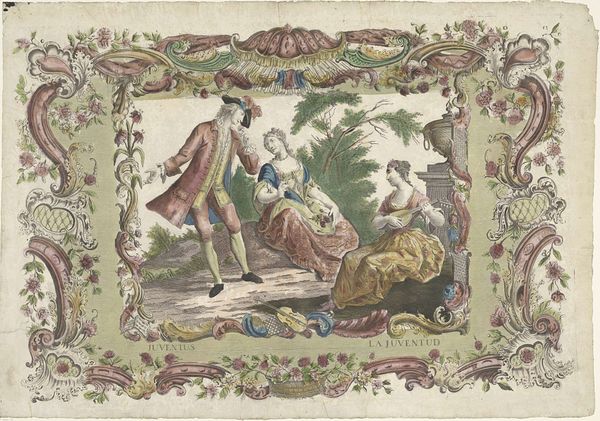
oil-paint
#
baroque
#
oil-paint
#
landscape
#
figuration
#
oil painting
#
genre-painting
Dimensions: height 324 cm, height 313 cm, width 205 cm, width 206.8 cm
Copyright: Rijks Museum: Open Domain
This tapestry is a product of the Manufacture Royale des Gobelins, a tapestry workshop of the French Royal family. It depicts the story of Pan and Syrinx, a tale drawn from Ovid’s Metamorphoses. What might such a story mean in the hands of royal weavers? The tale is one of sexual pursuit and transformation: the nymph Syrinx flees Pan’s advances and is turned into reeds to escape him. But Pan, undeterred, cuts the reeds and fashions them into his pipes. Here, the female figure is central, albeit unwilling, in this act of artistic creation, yet she is denied agency in the process. The tapestry offers a window into historical attitudes towards gender, desire, and power. While appearing decorative, pieces such as these were integral to the construction of royal identity and the consolidation of cultural narratives. In what ways do these tapestries maintain, or depart from, traditional representations of women, nature, and artistic inspiration?
Comments
rijksmuseum about 2 years ago
⋮
Pan, the god of forests, pursues the nymph Syrinx. She beseeches the river nymphs to help her escape his grasp, and they transform her into a tuft of reeds.
Join the conversation
Join millions of artists and users on Artera today and experience the ultimate creative platform.
